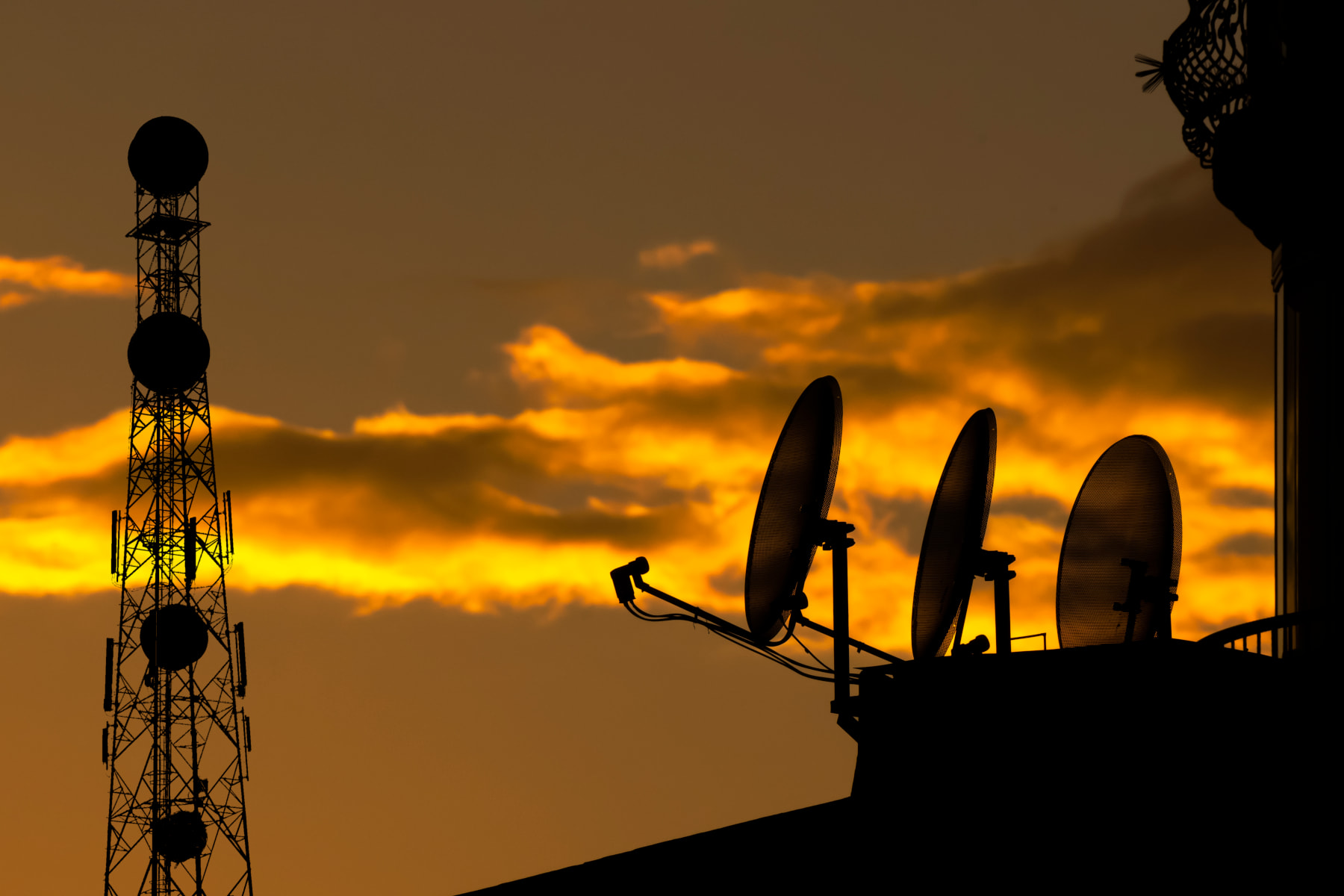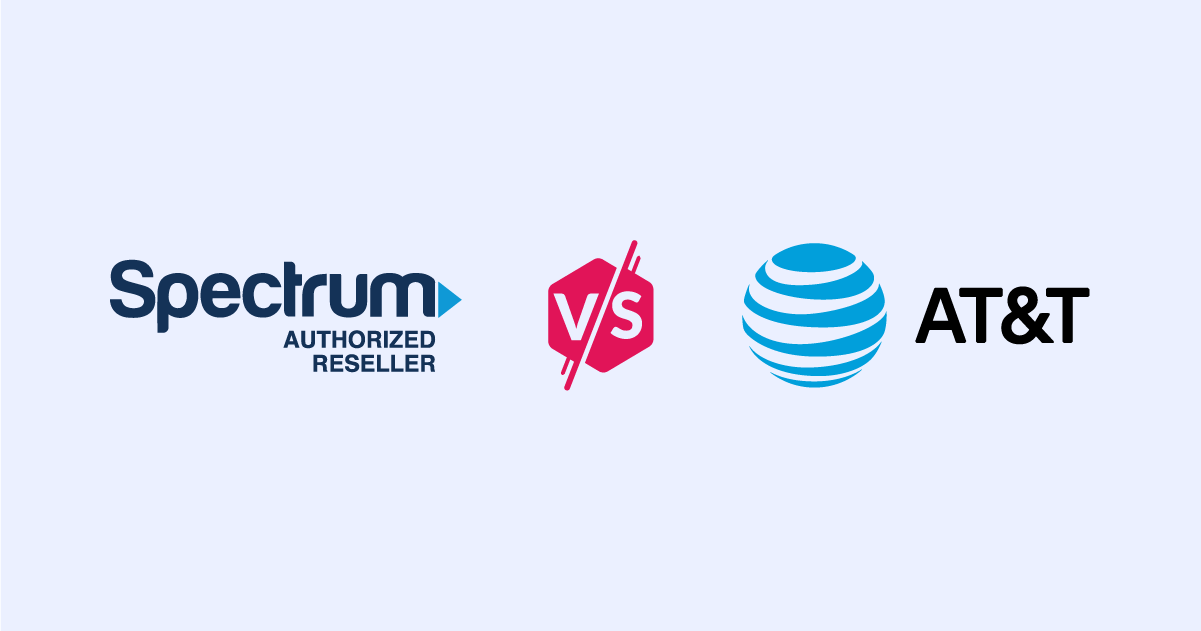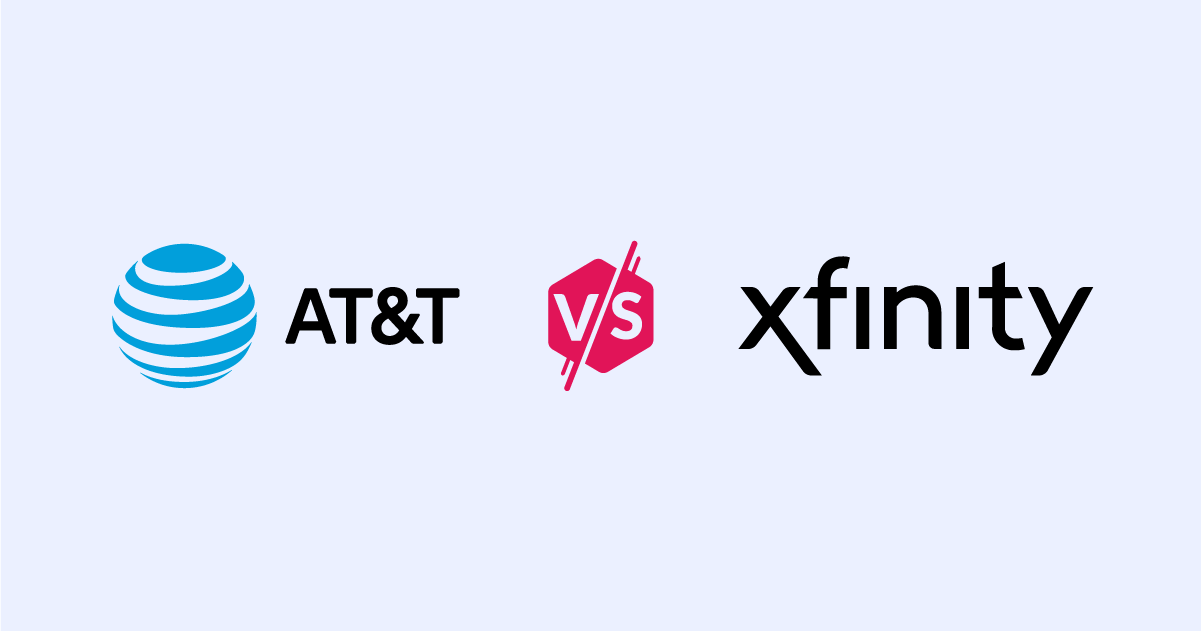Is 100 Mbps Fast?
Apr 4, 2023 | Share
Brand Guides
An internet speed of 100 Mbps is fast—but it’s not extremely fast. It’s just above average for most internet users.
While 100 Mbps is enough to stream, game, and Zoom with ease, some users don’t need internet that fast, while others need something much faster. See below for tips on how broadband internet speed works and what internet speed you need.
Are you looking for fast internet with at least 100 Mbps speeds? Run a search with your zip code below to see what kind of internet packages are available in your area.
What is a good internet speed?
| Internet speed | What you can do |
|---|---|
| 0–5 Mbps | Send emails, search Google, stream in HD on a single device |
| 5–40 Mbps | Stream in HD on a few devices, play online games, run 1–2 smart devices |
| 40–100 Mbps | Stream in 4K on 2–4 devices, play online games with multiple players, download big files quickly (500 MB to 2 GB), run 3–5 smart devices |
| 100–500 Mbps | Stream in 4K on 5+ devices, download very big files very quickly (2–30 GB), run 5+ smart devices |
| 500–1,000+ Mbps | Stream in 4K on 10+ devices, download and upload gigabyte-plus–sized files at top speed, do basically anything on lots of devices with no slowdowns |
Speed requirements taken from HighSpeedInternet.com’s How Much Internet Speed Do I Need? guidelines.
A good internet speed is about 100–200 Mbps. That’s enough bandwidth to let you stream videos, play games online, and participate in video chat meetings on a range of devices. And it will promise fast internet even when there are several people on your Wi-Fi.
Granted, you won’t always need internet that fast, especially if you mostly go online to check email, read headlines, and do a bit of streaming in HD. The Federal Communications Commission defines broadband internet as anything that can achieve a minimum of 25 Mbps download speeds and 3 Mbps upload speeds—which is plenty for low-key internet surfers.
On the other hand, 100–200 Mbps is hardly the max connection speed you can get from an internet package. These days the fastest internet plans frequently top out at 1,000 Mbps. Xfinity even has a fiber plan that delivers 6,000 Mbps download speeds, which is not necessary for most people (and is ridiculously expensive).
Still, plans in the range of 500–1,000 Mbps are useful if you live with a lot of people and everyone is on the internet at the same time. You’ll require a ton more bandwidth as you have more users doing speed-intensive stuff like streaming movies, playing online games, and/or making calls on video-chat apps.
How much speed do you need?
Take a spin through our How Much Internet Speed Do I Need? tool to see if you’re getting the best speeds to meet your everyday Wi-Fi needs.
Is 100 Mbps be fast enough for you?
| Download | Time it takes with 100 Mbps |
|---|---|
| Small PDF (50 KB) | Less than a second |
| Ebook (2.5 MB) | Less than a second |
| ZIP file of .jpgs (425 MB) | 34 seconds |
| HD video file (2 GB) | 2.7 minutes |
| Video game (30 GB) | 40 minutes |
| iPhone backup (256GB) | 5.7 hours |
| Terabyte cloud drive (1 TB) | 22 hours |
*We calculated these download speeds using the download calculator from OmniCalculator.com.
A connection speed of 100 Mbps will be fast enough for you to download small files quickly, stream movies in HD, play online games on a handful of devices, and operate a few smart-home devices.
But 100 Mbps won’t be fast enough if you live in a large household and a lot of people are using your Wi-Fi to do high-bandwidth activities at the same time. Also, 100 Mbps speeds will require longer wait times to download large files.
To make sure your internet speeds are fast enough, consider ordering an internet package that sets aside 25 Mbps for each person living in your household. If you’re living alone, then 25 Mbps may be enough. But if you’re living with three others, then 100 Mbps will be right on the money. However, any more roommates than that and you may want to upgrade to 200 Mbps, 500 Mbps or even 1,000 Mbps speeds depending on what you use your internet for.
What you can do with 100 Mbps:
- Stream HD video on several devices
- Play multiplayer games online with two or three devices
- Run three to five smart-home devices
- Participate in group Zoom meetings with HD video switched on
What you can do with speeds faster than 100 Mbps:
- Stream 4K video on half a dozen devices or more
- Play multiplayer games online with four to ten devices
- Run five or more smart-home devices
- Participate in group Zoom meetings while three or four housemates also do any of these activities
What’s the best 100 Mbps internet plan?
| Plan | Price | Speed (download/upload) | View plans |
|---|---|---|---|
| Cox Essential 100 | $49.99/mo.** | 100 Mbps/3 Mbps | |
| EarthLink 100 Mbps Internet | $59.95/mo.* | 100 Mbps/100 Mbps | |
| Mediacom Internet 100 | $19.99/mo.† | 100 Mbps/10 Mbps | |
| AT&T Internet 100 | $55.00/mo.‡ | 100 Mbps/100 Mbps | |
| Astound Broadband 100 Mbps Internet | $25.00/mo.§ | 100 Mbps/15–100 Mbps | |
| Sparklight 100 Plus | $39.99/mo.| | 100 Mbps/10 Mbps |
* with a 12 month contract
† For the first 12 months. Plus, activation, installation and monthly modem rental fees.
‡ For 12 mos, plus taxes. Price after $5/mo Autopay & Paperless bill discount (w/in 2 bills). Plus taxes $ fees. Limited availability. May not be available in your area. Call or go to att.com/internet to see if you qualify.
§ Regional price differences may apply. No contract required. 24 Month Internet Pricing. Equipment priced separately. Includes $5 discount for 12 months w/ ebill & autopay. Observed speeds may vary. Excludes surcharges and fees. New residential customers only.
# With enrollment in AutoPay & paperless billing. Equipment & speed availability vary by area. $10 off for 12 months on regular rate of $39.99.
** for 12 months with 1-yr. term agreement
| For 1 year. $45/mo. (13-24) $55/mo. after trial offer.
Plenty of internet service providers have 100 Mbps plans, or plans that hit speeds in the ballpark of 100 Mbps. We like EarthLink’s 100 Mbps plan because it runs over a fiber connection, which means you’ll have much more consistent speeds and performance. EarthLink has excellent customer service ratings and it folds the usual extra prices (for equipment and installation) into the overall bill, so you’re getting a straight deal.
However, that’s a pretty expensive plan for 100 Mbps speeds. So if you want to save some cash, then definitely go for a plan from Astound Broadband. Just keep in mind that you’ll also have to pay an extra fee—equipment isn’t included as it is on EarthLink.
What’s the best router for fast internet?
The best router for fast internet is the TP-Link Archer AX11000. It’s a supercharged, tri-band Wi-Fi 6 router packing eight Gigabit Ethernet ports, multigig internet support, 12 streams, and loads of extras like free security and parental controls. It offers great W-Fi speeds at a great price that just can’t be beat.
If you don’t have a multigig connection (1.1 Gbps+), don’t fret—any router with a Gigabit Ethernet internet port will do. We suggest going with a Wi-Fi 6 router since it’s newer, supports more devices, faster speeds, and better data management, but there are still plenty of great Wi-Fi 5 routers you can get.
For more router recommendations, check out these lists:
- Best Gigabit Routers for Superfast Wi-Fi
- Best Long-Range Routers for Extended Wi-Fi
- Best Routers for Gaming
- Best Routers for Streaming
Amazon.com Price (as of 5/3/22 10:15 MST). See full disclaimer.
What are the fastest internet providers?
* Speed based on our Fastest Internet Providers report.
† See Google Fiber disclaimer.
‡ See Verizon Fios disclaimers.
§ See Xfinity disclaimers.
|| See Astound Broadband disclaimers.
** for 12 months with 1-yr. term agreement.
Based on results from millions of internet customers who’ve used our speed test, Google Fiber has the fastest internet speeds in America. Although Google Fiber’s fastest-possible plans hit much higher speeds, the average customer gets upload and download speeds of around 167.1 Mbps.
Verizon Fios, Xfinity, and Astound Broadband all come in close behind Google Fiber. Customers of these providers get average download speeds of well over 100 Mbps—and they each sell internet packages with much faster, gigabit speeds. These speed test results suggest that 100 Mbps (or slightly faster) is a solid speed for most internet users nationwide.
How does internet speed work?
Internet speed is commonly measured in terms of megabits per second, or Mbps.
A “bit” is the smallest unit of data in digital networking, equal to a single 1 or 0 in binary code. Websites, emails, videos, and other online things typically travel over an internet connection in large packets of bits—and a megabit equals one million individual bits.
Most internet connections typically fall in the range of 1–1,000 Mbps, making Mbps the most common measurement you’ll see advertised by internet service providers (ISP). But there’s a pretty wide gulf between 1 Mbps (really slow) and 1,000 Mbps (way fast).
You may notice some other terms too:
- Kilobits per second, or kbps.
These are the slowest internet speeds possible, covering everything under 1 Mbps. You’ll see kbps only in reference to the slowest DSL connections and older systems like dial-up.
- Gigabits per second, or Gbps.
These are extremely fast speeds, covering 1,000 Mbps and up. The fastest internet plans, which run over cable and fiber networks, usually top out at 1 Gbps. Internet experts often refer to 1,000 Mbps–plus speeds as “gigabit internet.”
What’s the difference between upload and download speeds?
| Connection type | Download speeds | Upload speeds |
|---|---|---|
| Fiber internet | 100–10,000 Mbps | 100–10,000 Mbps |
| Cable internet | 25–1,200 Mbps | 5–500 Mbps |
| DSL internet | 0.5–140 Mbps | Up to 1.5 Mbps |
| Satellite internet | Up to 100 Mbps | Up to 3 Mbps |
Upload and download speeds refer to different types of internet activities you do and how fast you can do them.
A download is data you receive from the internet, while an upload is data you send to the internet. Here’s a quick breakdown of examples:
Downloads
- Reading articles on news websites
- Downloading files from the cloud
- Streaming movies from Netflix
Uploads
- Posting on social media
- Uploading files to the cloud
- Sharing your screen over Zoom
In almost all cases, download speeds are a lot faster than upload speeds. Most of what we do online involves downloading data, so cable, DSL, and satellite internet providers have put a lot more effort into boosting download speeds while upload speeds have straggled far behind. Sometimes your upload speed could be as much as 10 times slower than your download speed.
The one exception is with fiber internet service providers like AT&T and Google Fiber , which deliver symmetrical speeds. That means your upload speed will be just as fast as your download speed, making it an ideal choice if you depend heavily on using things like Google Drive and Zoom, post a lot of stuff on TikTok and YouTube, or frequently host livestreams.
Pro tip:
Remember, you can always take a speed test to see what kind of connection speed you have. Then you can decide whether you’re good or if your Wi-Fi could use an upgrade.
What is a good download speed?
Anything in the range of 100–200 Mbps is a good download speed.
A slower download speed than 100 Mbps can still be good. But a faster speed might be necessary if you live with a lot of people and everyone frequently uses the internet on multiple devices all at once—a common occurrence in this day and age.
What is a good upload speed?
A good upload speed is 5 Mbps or faster.
Since most of what we do online involves downloading data, you don’t need to worry too much about whether you have adequate upload speeds. Many DSL internet plans give you a max of just 1.5 Mbps for uploads, which is enough to support activities like Zoom group calls with your video switched on.
However, consider upgrading your upload speed if you struggle with long loading times or disconnections while you’re uploading files, attending a Zoom meeting, or hosting a livestream. You can also switch to a fiber package, if it’s available, which will give your uploads a Superman–style speed boost.
You can see what kinds of speeds internet providers offer in your area by searching with your zip code below.
Is 100 Mbps good for gaming?
Yes, 100 Mbps is a solid speed for gaming online. But you may need faster speeds depending on how often you play and what else you do online between runs on games like Fortnite and Overwatch.
A lot of games you can play online still work well even when you have relatively slow internet speeds. But having a plan that’s 100 Mbps or faster leaves enough bandwidth for downloading big video game files, chatting on gamer-friendly apps like Discord, and doing other tasks while you’re playing games.
Gaming and latency
| Connection type | Latency (in ms)* |
|---|---|
| Fiber | 5–12 |
| Cable | 18–24 |
| DSL | 27–55 |
*Data from the Federal Communications Commission’s “Ninth Measuring Broadband America Fixed Broadband Report.”
While speed is important for online gamers, low latency is also central to having a good gaming experience.
Latency refers to the slight delay (measured in milliseconds) when a signal is sent back and forth between a device to the network’s servers. Higher rates of latency lead to lag, which will cause headaches in fast-paced games like Call of Duty or Halo, slowing your controller’s response time as you fire weapons and maneuver your player.
Having a faster internet speed also often correlates to lower latency, but the best way to really reduce your latency is to get a fiber internet plan. A fiber-optic connection reduces the amount of interference you can get over a connection, bringing down your latency significantly.
Pro tip:
Take a look at our best internet for gaming guide for recommendations on the most gamer-friendly Wi-Fi plans. It’s also got tips on how to ensure a speedy and responsive connection during your gameplay.
FAQ about 100 Mbps speeds
Is 100 Mbps fast enough for me?
An internet speed of 100 Mbps is fast enough for a household of up to four people if they’re streaming videos in HD, participating in video chat meetings over Skype or Zoom, and playing multiplayer online games. You’ll likely need a faster speed if you have more people in your household or more Wi-Fi devices that you’re using all at once.
How fast do I need my internet?
You need your internet to be at least 25 Mbps (for download speed) and 3 Mbps (for upload speed) to do things like streaming, gaming, and attending video-chat meetings on one or two devices with minimal slowdowns. You’ll probably need your internet to be at least 100 Mbps if four or more people use your Wi-Fi on multiple devices at the same time.
Disclaimers
Google Fiber disclaimer
Terms and Conditions: Plus taxes and fees. Service not available in all areas. If you live in an apartment or condo, Google Fiber’s ability to construct and provide Fiber is subject to the continued agreement between Google Fiber and the property owner. Upload/download speed and device streaming claims are based on maximum wired speeds. Actual Internet speeds are not guaranteed and may vary based on factors such as hardware and software limitations, latency, packet loss, etc.
Verizon Fios disclaimers
- w/ Auto Pay. Available in select areas.
- w/ Auto Pay and select 5G mobile plans. Available in select areas.
- Available in select areas only. Price per month with Auto Pay & without select 5G mobile plans. Fios plan prices include taxes & fees.
Xfinity disclaimers
- For 12 months. No term contract. Taxes and equipment not included. Includes $10/mo automatic payments and paperless billing discount. Regional price differences may apply.
- For 24 months. No term contract. Taxes not included. Includes $10/mo automatic payments and paperless billing discount. Regional price differences may apply.
- For 24 months. No term contract. Taxes and equipment not included. Includes $10/mo automatic payments and paperless billing discount.
Astound Broadband disclaimers
- Regional price differences may apply. No contract required. 24 Month Internet Pricing. Equipment priced separately. Includes $5 discount for 12 months w/ ebill & autopay. Observed speeds may vary. Excludes surcharges and fees. New residential customers only.
- Regional price differences may apply. 24 Month Internet Pricing. No contract required. Equipment priced separately. Includes $5 discount for 12 months w/ ebill & autopay. Experienced speeds may vary. New residential customers only.
- Regional price differences may apply. for 12 months w/ ebill & autopay. Experienced speeds may vary. New residential customers only.
Amazon disclaimer
Product prices and availability are accurate as of the date/time indicated and are subject to change. Any price and availability information displayed on Amazon.com at the time of purchase will apply to the purchase of this product. HighSpeedInternet.com utilizes paid Amazon links.
CERTAIN CONTENT THAT APPEARS ON THIS SITE COMES FROM AMAZON. THIS CONTENT IS PROVIDED ‘AS IS’ AND IS SUBJECT TO CHANGE OR REMOVAL AT ANY TIME.
Author - Peter Holslin
Peter Holslin has more than a decade of experience working as a writer and freelance journalist. He graduated with a BA in liberal arts and journalism from New York City’s The New School University in 2008 and went on to contribute to publications like Rolling Stone, VICE, BuzzFeed, and countless others. At HighSpeedInternet.com, he focuses on covering 5G, nerding out about frequency bands and virtual RAN, and producing reviews on emerging services like 5G home internet. He also writes about internet providers and packages, hotspots, VPNs, and Wi-Fi troubleshooting.
Editor - Aaron Gates








